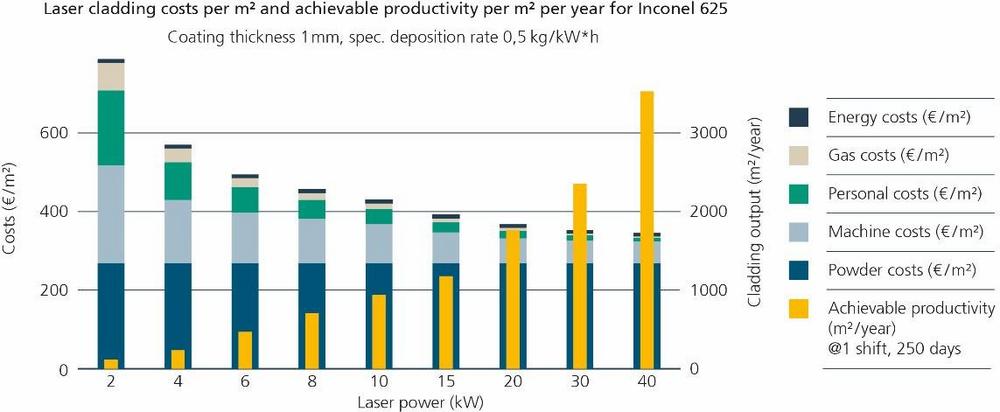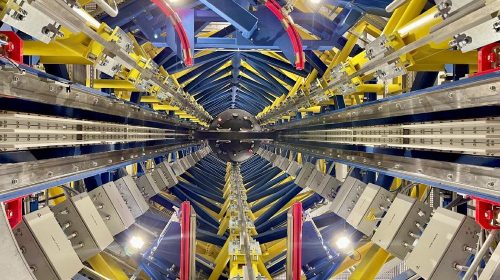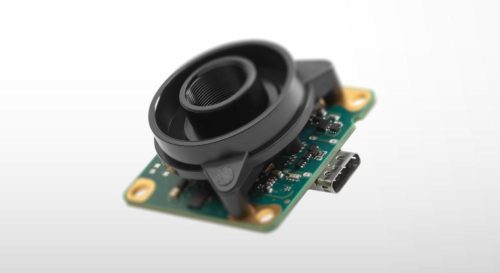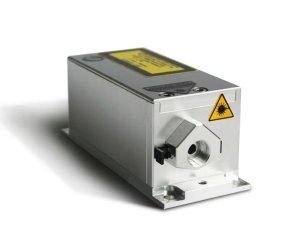
HICLAD® enables resilient laser cladding with high-power laser
High feed rate, optimal speed, and large spot: Fraunhofer IWS has been developing the HICLAD® process family for laser cladding for several years to enable customized solutions for highly productive coating processes using high power diode lasers. To this end, the researchers are, among other things, fine-tuning the parameters of energy distribution, speed and feeding rate in such a way that wide process windows become possible and fluctuations in the production process become tolerable. “We are once again pushing the limits of applying high-power lasers,” emphasizes Dr. Maria Barbosa, who heads the Thermal Coating Department at Fraunhofer IWS. HICLAD® does not only enable sustainable functional coatings that ultimately improve the durability, wear resistance and lifetime of the components processed with it. The technology also brings resources such as material, time and costs into the best possible balance, she adds. “We look at the functionalization of component surfaces holistically and with the goal of still achieving resilient as well as industry-ready results with minimal material use and short cycle times.” The researchers say that a key component is measurement and control hardware, some of which has been developed in-house, that enables them to monitor and regulate the complex process and control its quality. “In this way, we are contributing significantly to greater resource efficiency in industry,” adds Maria Barbosa. HICLAD® comes into play, for example, for the laser-based hardfacing coating of brake discs, hydraulic cylinders and plain bearings. In the future large components for the oil, gas and paper industries and many other sectors may also be coated efficiently.
Application rate tripled with 20 kW laser
Laser cladding has since long been used for high-quality industrial coatings. However, this process only allowed a comparatively low deposition rate at high investment costs. Yet this is crucial for productivity, which is why companies have rarely used it for large components and bulk series. This has changed with the increased availability of industrial diode lasers with ten, in some cases up to 20 or more kilowatts of power, which permit much higher deposition rates. Nevertheless, the use of these high power lasers requires special process expertise. For many years, Fraunhofer IWS has been a pioneer in the use of high power lasers with steadily increasing power classes – especially for laser cladding. Based on this experience, the Dresden institute and the company Laserline have now achieved and surpassed deposition rates with 20-kilowatt diode lasers which were previously only feasible using Plasma Transferred-Arc Processes (PTA). The partners have also made considerable progress compared to existing laser-based solutions: Depending on the specific material and the nozzle selected, HICLAD® achieves deposition rates of 18 kilograms per hour in industrial use. For an Inconel 625 nickel alloy, for example, productivity can be roughly tripled compared to a solution using a conventional nine-kilowatt laser. The exact values depend on the specific application scenario. Compared to competing solutions with high-power lasers, the Fraunhofer IWS process is considered more robust.
COAXquattro can process powder and wire simultaneously
In contrast to powder-based laser cladding, wire-based processes were previously limited to a maximum of six kilowatts. COAXquattro now enables laser power of up to 20 kilowatts to be used in the combination of wire and powder. This can play a decisive role in multi-material development, for example of novel alloys. Different materials can be fed as required through each of four wire and powder channels. In addition, the comparatively short processing times shrink expenditures for staff, shielding gases and other operating costs. In general, the system is designed for particularly efficient material utilization as well as very robust and flexible process control with high quality.
Next step leads into 45-kilowatt class
“Together with Fraunhofer IWS, we have succeeded in opening up concrete applications for a new class of high-power lasers to industry,” explains cladding and additive manufacturing expert Dr. Sörn Ocylok from industrial laser manufacturer Laserline in Mülheim-Kärlich. “Currently, we are already testing the further scalability of the processes by using a higher diode laser power class with up to 45 kilowatts output power in test runs – aiming at potential industrial application in the near future.” The project partners will present their joint work at the LASER World of PHOTONICS trade fair from April 26 to 29, 2022. There Fraunhofer IWS will inform about HICLAD®, present the laser nozzle COAXquattro and show a high power laser welded plain bearing. In addition to a 45-kilowatt diode laser, Laserline will also present brake discs coated by high-power laser cladding. Thanks to high-quality laser coating, they release less abrasion and may thus help to reduce fine dust pollution in city air.
Info box
Visit us at LASER WORLD of PHOTONICS 2022
Fraunhofer IWS will present latest research results on joining, laser ablation and cutting, additive manufacturing, microtechnology, cladding and optical inspection technology in addition to HICLAD® and COAXquattro at the Munich fair in hall A6, Fraunhofer joint booth 441. For more information, visit https://s.fhg.de/LWoP2022en.
Laserline will be showing detailed presentations of the new high-power cladding solutions with up to 45-kilowatt laser power in Hall A5, Booth 305.
About Laserline
Laserline GmbH launched its business in 1997 in the German city of Mülheim-Kärlich (close to Koblenz). As a leading international manufacturer of diode lasers for industrial material processing, Laserline has since become the very embodiment of this innovative technology and can look back with pride at 25 years of corporate history. Worldwide, more than 5,000 high-power diode lasers from Laserline are currently in use and have proven their efficiency in a wide range of different processes and applications. Currently, the company employs about 350 people and has several international subsidiaries in the USA, Brazil, Japan, China, South Korea and India, as well as representatives in Europe (France, UK, Italy) and in the Asia-Pacific region (Australia, Taiwan). The company is highly focused on sustainable growth. By setting up its headquarters in Mülheim-Kärlich, the spatial conditions for future expansion in terms of development and production were thus put in place from the get-go.
More information at https://www.laserline.com/en-int/.
Materials and Lasers – Competence with a System: The Fraunhofer Institute for Material and Beam Technology IWS develops complex system solutions in materials and laser technology. We define ourselves as idea drivers developing customized solutions based on laser applications, functionalized surfaces as well as material and process innovations – from easy-to-integrate custom solutions to cost-efficient solutions for small and medium-sized enterprises to industry-ready one-stop solutions. Our research focuses on aerospace, energy and environmental technology, automotive, medical and mechanical engineering, toolmaking, electrical engineering and microelectronics, and photonics and optics sectors. In our five future and innovation fields of battery technology, hydrogen technology, surface functionalization, photonic production systems and additive manufacturing, we are already creating the basis today for the technological answers of tomorrow.
Fraunhofer-Institut für Werkstoff- und Strahltechnik IWS
Winterbergstraße 28
01277 Dresden
Telefon: +49 (351) 83391-0
Telefax: +49 (351) 83391-3300
http://www.iws.fraunhofer.de
Division Manager Thermal Coating
Telefon: +49 (351) 83391-3429
E-Mail: maria.barbosa@iws.fraunhofer.de
Leiter Unternehmenskommunikation
Telefon: +49 (351) 83391-3614
Fax: +49 (351) 83391-3300
E-Mail: markus.forytta@iws.fraunhofer.de
![]()




